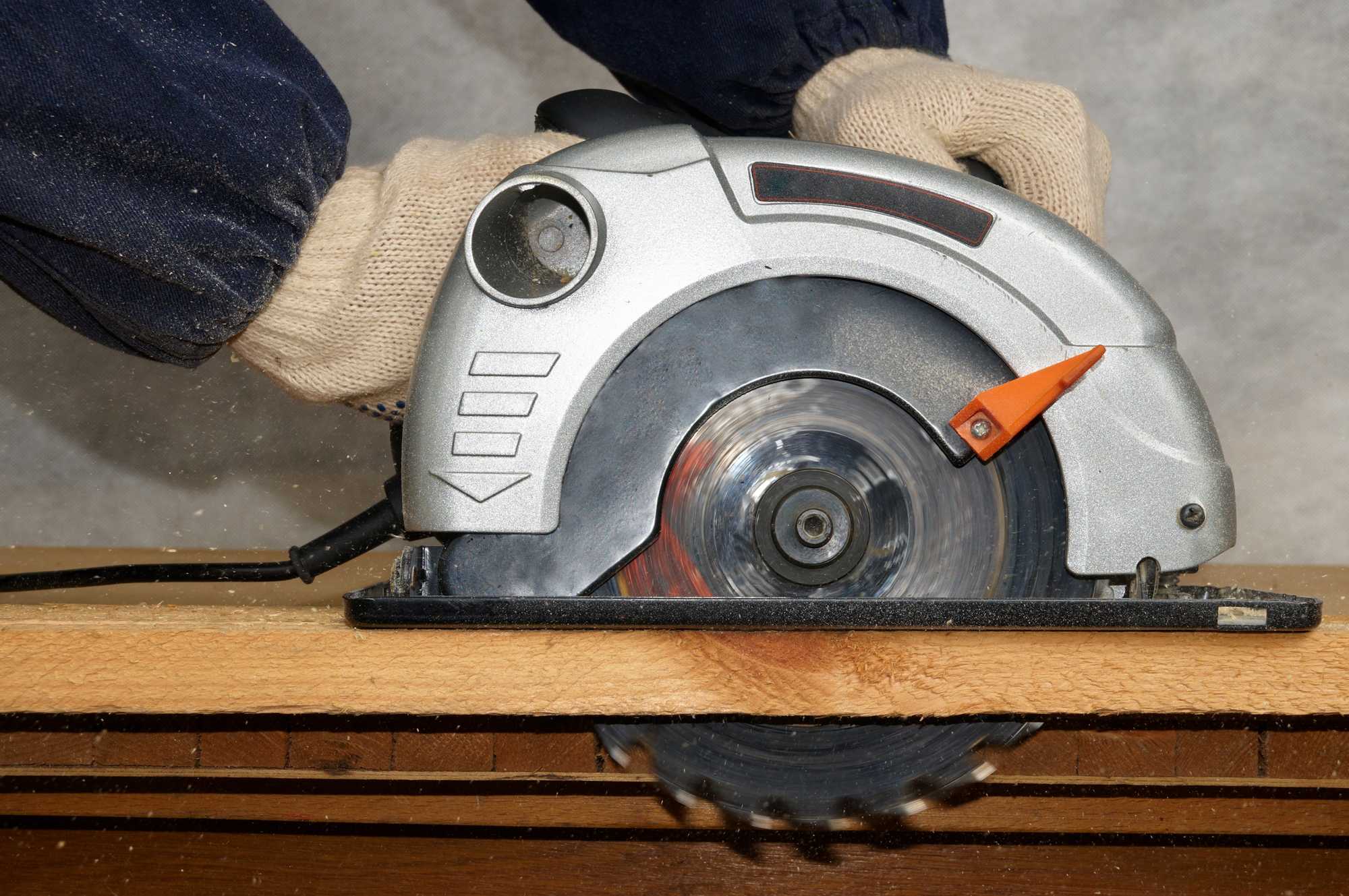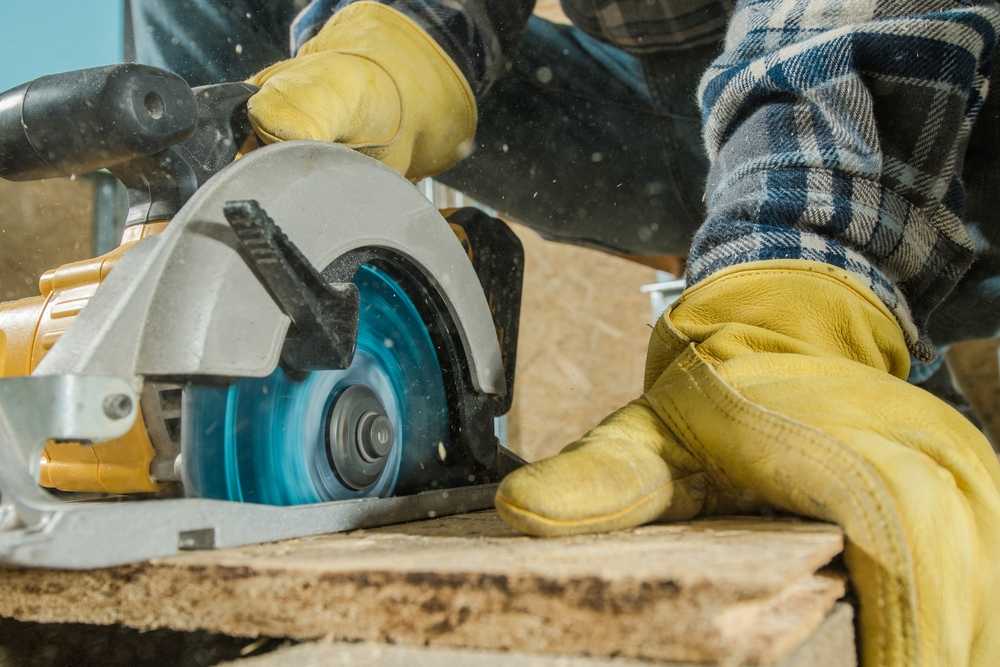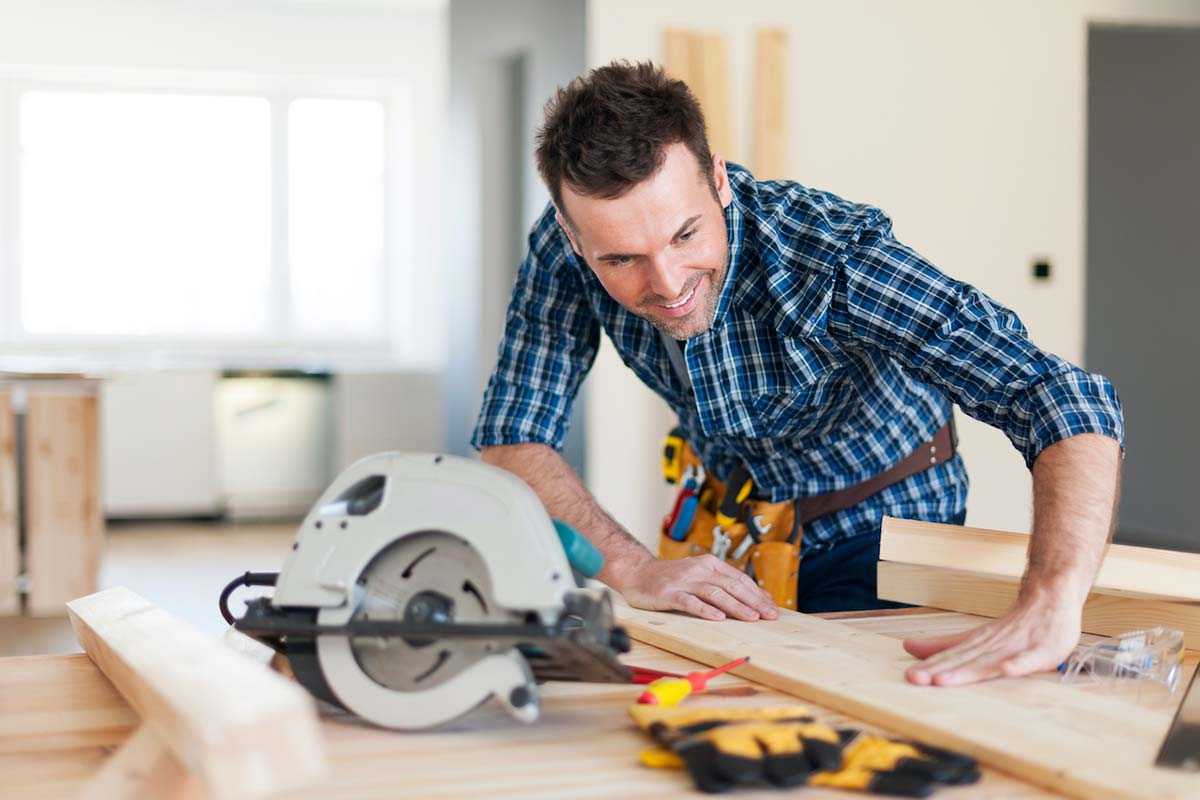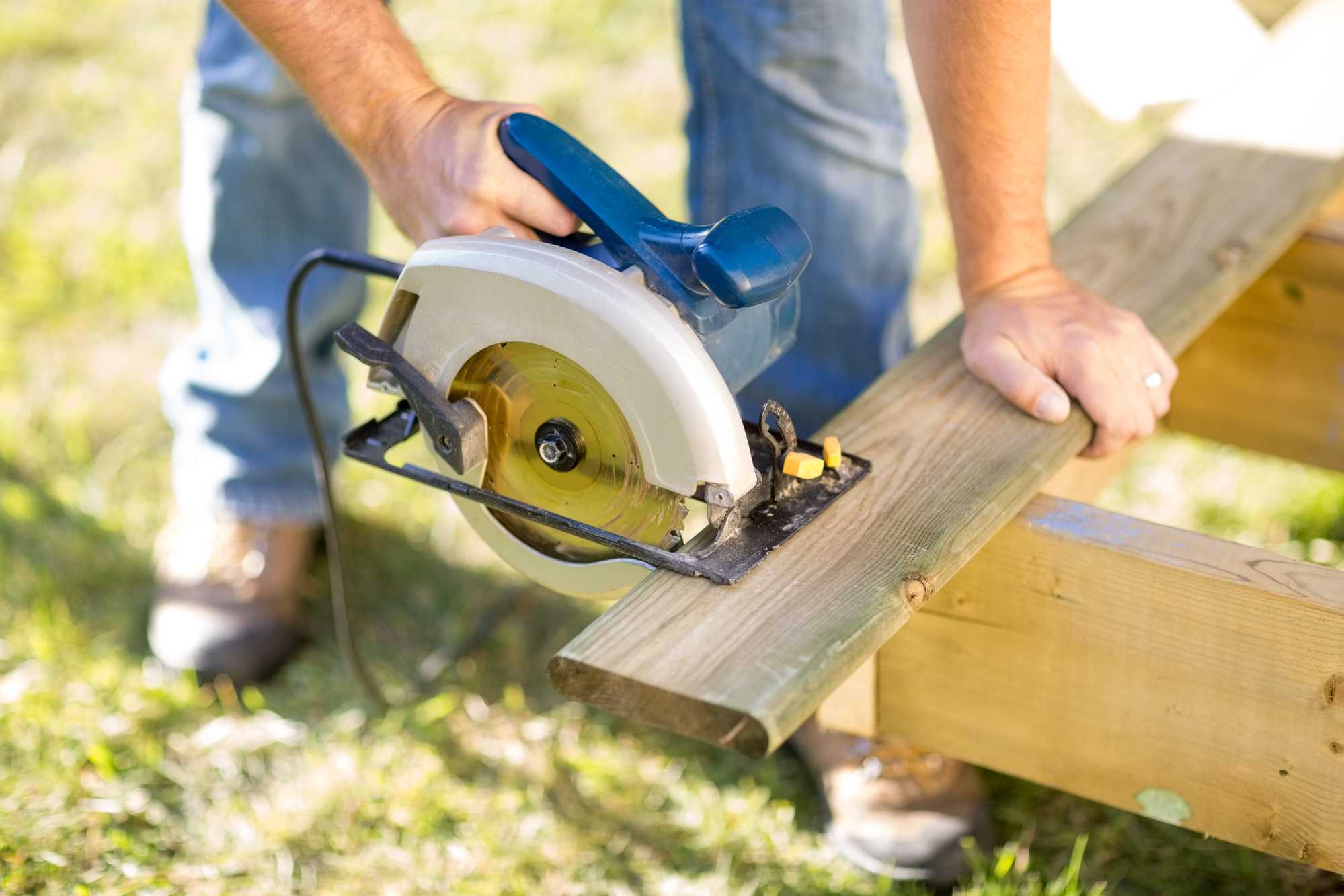Choosing a Circular Saw: A Complete Buyer's Guide
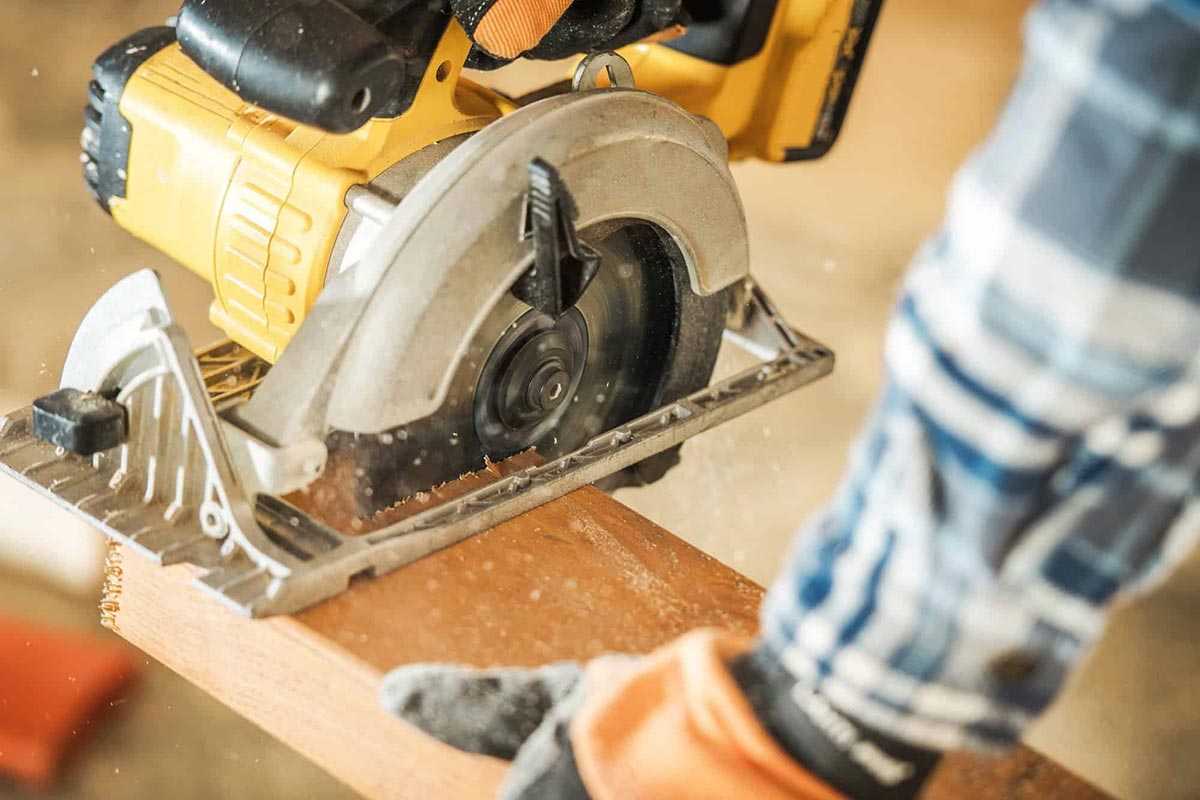
Confused what features matter when buying a circular saw? This guide explains everything you need to know.
Do you find yourself needing to break down sheet goods like plywood or MDF? Or cut dimension lumber like 2x4s to length? The circular saw is the tool I reach for to get these jobs done quickly. It’s a versatile power tool that lets you make short work of many different cutting jobs. The circular saw has been around in its current form for almost 100 years. And it’s the first type of power saw that many people buy.
While you won’t be using a circular saw for fine woodworking, it can handle lots of other jobs. Cutting timber for framing walls, floors, or decks is its bread and butter. And, as I mentioned, it’s much easier to cut large sheet goods like plywood, laminate, or MDF than it is on a small table saw like the one I have in my shop. And even for more precise woodworking projects, you might find it useful for making rough cuts to get material down to a size more easily finished with hand tools.
If you don’t yet own a circular saw, it might be time to get one. It can make a whole range of projects much easier to tackle. While it’s a fairly straightforward tool, there are a lot of options on the market today. I’ll break down the features you should look at when deciding which model is the best circular saw for you.
Terminology
There are, of course, many different kinds of saws that use a circular blade, from tiny rotary tools up to vehicle-sized concrete cutters and the monster blades a sawmill uses to process trees into lumber. But the term “circular saw” generally refers to one specific type of power tool.
It’s small enough to be handheld, with a flat rectangular shoe that rides along the top of the material being cut as the operator pushes it forward. The circular blade protrudes down through the shoe and spins inside a pivoting blade guard that keeps the portion of the blade not actively engaged in cutting out of harm’s way.
You’ll often see circular saws referred to as Skilsaws (or Skil saws or even skill saws). Skilsaw was the company (now named Skil) that introduced the first portable circular saw way back in 1924. Their name has become something of a generic term, like Kleenex for facial tissue. They still produce many different Skilsaw-brand saws, so I’ll stick to the term “circular saw” below in order to avoid confusion with any specific product.
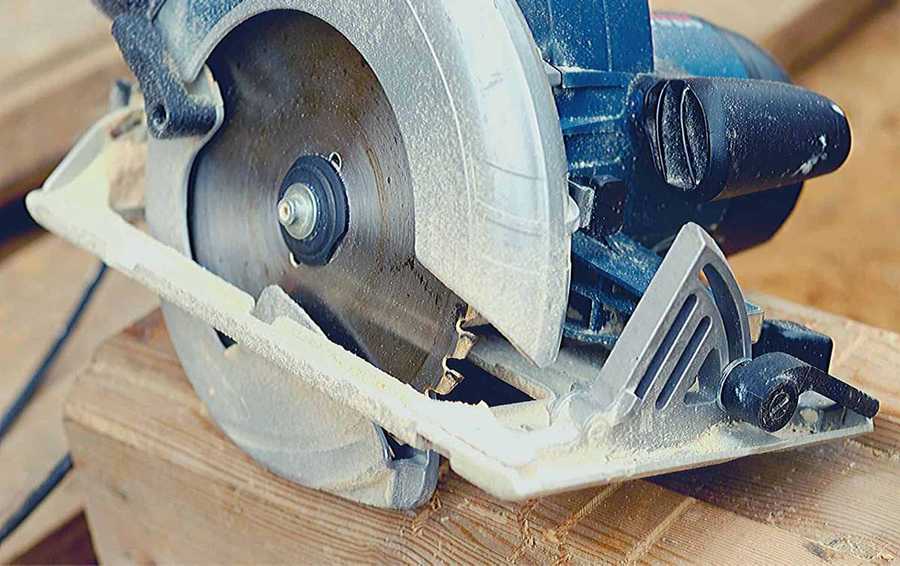
Power Source
The first decision you’ll need to make is what sort of power source you want for your circular saw.
Corded
Historically, all electric circular saws sported a power cord that plugged into a standard 120-volt outlet. While that’s no longer universally true, corded models still make up a large portion of the circular saw market. Their obvious limitation is that you’ll need to be within reach of a power outlet or extension cord in order to cut anything. This might not be much of an issue if you’ll primarily be using your circular saw in a shop or around the house.
Related: The Best Corded Circular Saws
The cord provides some big advantages, though. You never need to worry about running out of battery in the middle of a project. This might be an important consideration if you need to spend hours cutting framing timber, for instance. They also tend to have beefier motors that will let you cut thicker or harder materials like metal, masonry, and concrete. And you’ll be able to find corded circular saws that take larger blades than their cordless cousins, which again will let you tackle thicker material.
When reading about corded saws, you’ll often see manufacturers rate their motors as, say, 2.5 horsepower. Take these claims with a grain of salt. Those measurements are made by pushing the motor to its limit with a much higher current draw than you can sustain on a typical residential circuit. A motor on a 120-volt 15-amp circuit can produce a theoretical maximum 1800 (120 x 15) watts of output, or about 2.4 HP, before the circuit breaker trips. And motors are not 100% efficient, so you can expect to see about 1.5 to 1.75 HP in reality. Ignore the manufacturer claims and look at actual reviews that tell you how well the saw performs.
Cordless
Cordless power tools have been around since the 1960s, but the batteries were often not up to running a power-hungry tool like a circular saw. By the 1990s, battery technology finally improved to the point that you could power a circular saw long enough to do real work. Today, many different manufacturers offer cordless circular saws. Voltages vary by manufacturer but the most common are either 18V or 20V, and some higher-end systems feature batteries up to 60V.
Related: The Best Cordless Circular Saws
The biggest selling point of cordless systems is clearly that you can work without direct access to electrical power. If you have a large property or are doing construction far from electrical power, this could be a big benefit. And no power cord means one less thing to get in the way of you or the saw blade.
Except at the high end, cordless circular saws typically won’t have the power to cut materials like metal or masonry, so you’ll be limited to cutting wood for the most part. But the most powerful cordless saws can give corded saws a run for their money and in some cases even outpower them.
You’ll need to make sure you keep enough batteries charged to get through a project without annoying delays. Battery life can vary widely by model and manufacturer, so it pays to read reviews carefully.
If this will be your first cordless tool, pay attention to the rest of a manufacturer’s cordless product line. Each cordless tool system uses different batteries and chargers. It might make sense to choose one cordless tool manufacturer and stick with them, so you have a single set of batteries you can use on all (or at least most) of your tools. If not, you’ll have multiple different chargers to keep track of, and you’ll spend more on batteries in order to make sure you have enough of each type on hand.
Gasoline
You’re most likely going to want an electric circular saw. But it’s worth mentioning that gasoline-powered circular saws used to be sold in the past. Some larger saws meant for cutting concrete are still powered by gasoline. There are even companies that convert regular electric circular saws to run on gasoline, which makes them more expensive than their electric counterpart. They target homesteaders and others who might be doing construction in remote areas without electricity. Running the saw directly on gasoline avoids the need for a heavy generator to convert gasoline to electricity.
Drive Mechanism
There are three different ways the motor on a circular saw is commonly connected to the saw blade: direct-drive, worm-drive, and hypoid gear.
Direct-drive
The motor of direct-drive circular saws is connected directly to the shaft of the blade. These are commonly called sidewinders because the motor sits right beside the blade. The lack of extra mechanisms to drive the blade makes them lighter than other types of circular saws. But the position of the motor makes them heavier on one side. So even though they’re lighter they can be harder to keep steady if the saw is not completely supported from below.
In the past, sidewinders were known for delivering less torque than worm-drive models, because the blade had to spin at the same rate as the motor. Recent improvements have helped them catch up, and some high-end sidewinder saws can perform as well as worm-drive saws.
Worm-drive
A worm-drive motor sits behind the blade, usually directly in line with it. A gear runs forward and meshes with another gear connected to the blade. This gearing allows the blade to turn at a different rate than the motor does. Typically, worm-drive saw blades spin slower than on a sidewinder, a trade-off for having more torque. This lets them cut through much thicker or denser material than a comparable sidewinder saw. (As mentioned above, though, this advantage has diminished somewhat with advances in modern motors.)
Another advantage of having the motor behind the blade rather than next to it is that these saws are better balanced. They won’t tend to tip over to one side if not fully supported, which may be an advantage depending on the type of cutting you think you’ll be doing. The downside, though, is that the extra mechanisms add weight, so they are noticeably heavier than sidewinders.
The gear in a worm-drive saw needs lubrication and the oil bath it operates in will occasionally need to be changed. This is a maintenance step you wouldn’t need to consider with a direct-drive saw. It isn’t something you need to do frequently–perhaps once after an initial break-in period, then yearly or even less often after that. But it is something you’ll need to think about.
Hypoid Gear
Hypoid saws are similar to worm-drive saws in most respects. In particular, the motor is behind the blade and drives it via a gear mechanism, so they are similarly heavy. The shape of the gears is quite different, however. They can deliver more power to the blade than an equivalent worm-drive saw. The gear mechanism and its lubricant are completely sealed, so you won’t need to periodically flush and refill the oil as you would with a worm-drive saw. There are only a few models of circular saws with hypoid drives on the market, so this may not be a choice you’ll run into often.
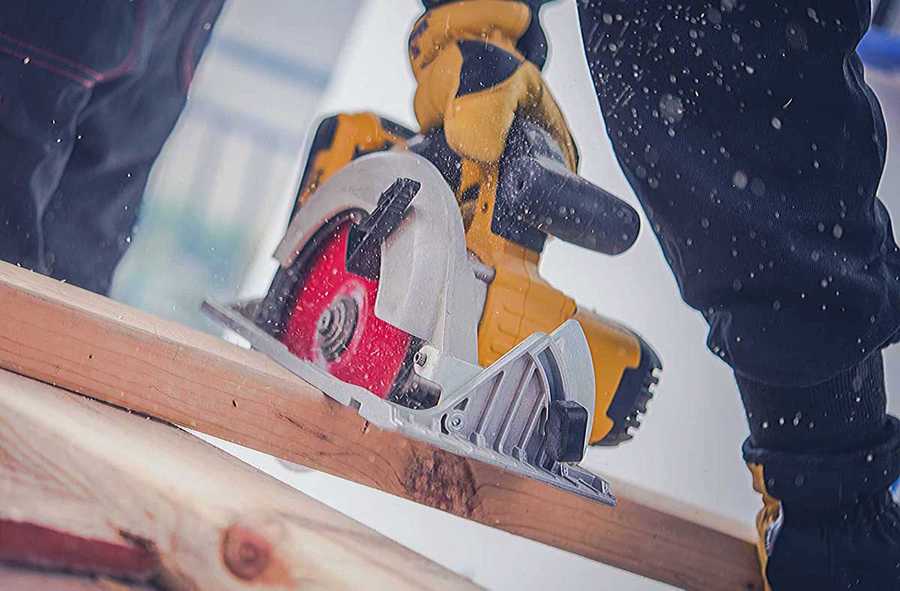
Blade Size
Circular saws come in a range of blade sizes from 5” to over 16”, but 7 1/4” is by far the most common blade size for general DIY use. In the past, cordless models were available only in the smaller sizes, since larger blades put excessive demands on their batteries. But now many manufacturers offer 7 1/4” cordless models, and even 9 1/4” models are beginning to appear. For the most part, though, anything above 7 1/4” remains the domain of corded saws.
Related: The Best 7-1/4" Circular Saw Blades
Most circular saws with 6” or larger blades will be able to cut through standard “2-by-” lumber (which of course is actually only 1 1/2” thick) even when angled to 45 degrees. While a small circular saw will be lighter and more maneuverable, if you go smaller than 6” you may need to make two cuts to achieve 45-degree cuts. Unless you have a specific reason to choose a different size, sticking to a 7 1/4” saw will give you a wide array of options for choosing the right blade for a particular task.
Shoe Material
The shoe is the rectangular piece of metal that rides along the material you’re cutting. The accuracy of your cuts depends on the shoe being flat and straight. Any bending or warping of the shoe will be reflected in the cuts the blade makes. And if the shoe breaks, you’ll be looking at downtime while you get it repaired.
Since tools tend to get banged up or dropped from time to time, you’ll want a sturdy shoe that won’t bend or break when abused. Most circular saw shoes are made of one of three metals: steel, aluminum, or magnesium.
Steel shoes are generally stamped out of a steel plate. That makes them cheap to make, so you’ll find them on lower-priced models. While we think of steel as being hard, it can bend fairly easily if it’s thin. So if you drop the saw, you run a good chance of bending or breaking a steel shoe.
Aluminum shoes may either be stamped like steel shoes or be cast in a mold. The stamped ones suffer the same problems as steel shoes. But the cast ones are usually thicker and have ribs along the surface that add reinforcement so they resist damage much better. And aluminum is considerably lighter than steel. You can find aluminum shoes on a wide variety of saws; cast aluminum will command a higher price than stamped.
Magnesium shoes are always cast. The magnesium alloy typically used is very damage-resistant, and magnesium is even lighter than aluminum. You’ll find this option only on higher-end saws.
Right-Blade vs. Left-Blade
Just like people are generally either right- or left-handed, circular saws come in both right-blade and left-blade configurations. This refers to which side of the saw the blade is on when viewed from the rear (how you see it when operating the saw). Historically, most sidewinder saws had the blade on the right, and most worm-drives had the blade on the left. These days you can find either blade configuration for both drive types, though the above are still the most common options.
You may also see these referred to as blade-right and blade-left or even right-handed and left-handed. That gets confusing when also talking about the handedness of the operator, so I’ll stick to “right-blade” and “left-blade”.
Which side the blade is on is not purely a cosmetic distinction. It can have an impact on how effectively you can use the saw. I’ll discuss how the choice affects a right-handed user. If you’re a southpaw, just swap “right” and “left” in the discussions below!
Right-Blade Saws
If you’re right-handed, the natural position for operating the saw is to hold the handle with your right hand. This means the motor tends to be in front of your body, which makes it hard to see the cut line marked on the saw’s shoe on the other side of the motor. That might be an issue if you’re cutting freehand and not running the saw along a guide. However, you’ll be able to use two hands to hold the saw (right on the handle and left on the forward pommel) while keeping your arms and hands safely away from the blade.
If you’re cutting large sheet goods like a 4’ x 8’ piece of plywood, you need to stand next to whichever edge you’re cutting along, since the piece is too large to lean across. If you’re right-handed, this means the side of the saw with the motor–the heavy side–is riding along the material you’re in the process of cutting off! Be aware when you’re running out of support for the saw and take care to keep it steady, or else you can pinch the material and bind the blade.
Of course, you can pretend you’re left-handed and make your cuts in the opposite direction, but many people will struggle to control the saw as effectively with their non-dominant hand.
Left-Blade Saws
If you’re right-handed, you can hold a left-blade saw with your right hand and still maintain a clear view of the cut line on the saw shoe directly in front of you. And when cutting large sheet goods, the heavy side of the saw with the motor will be supported to the right of the cut, on the part of the material that’s not being cut away.
The downside, though, is that if you need to use two hands to control the saw, your left hand will cross the path of the blade from the side that is not fully enclosed. This contradicts a basic power saw safety rule–never let the blade get between your hands and the rest of you. Consider the potential risk if you think you’ll frequently make cuts that need both hands.
Again, if you’re left-handed, swap the discussions above; what I wrote for right-blade saws applies to left-blade saws for you, and vice versa. And if you’re ambidextrous, congratulations, you don’t have to worry about this when choosing your saw!
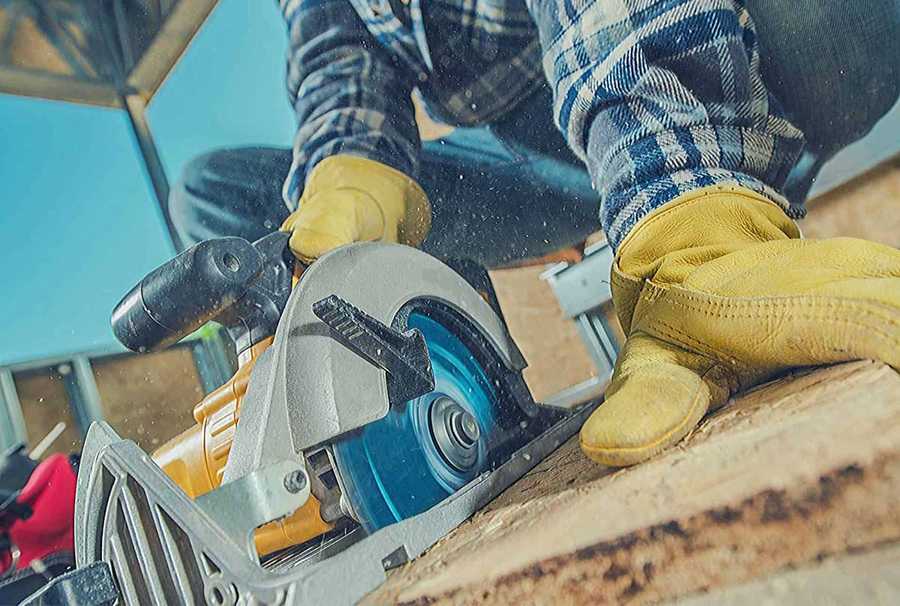
Bevel Adjustment
Circular saws can make angled, or beveled, cuts. Generally there’s a lever that lets you tilt the saw up around a pivot on the shoe. The shoe continues to ride flat against the material being cut, but the saw blade is now at an angle rather than perfectly perpendicular to the shoe.
Almost any circular saw can bevel up to 45 degrees, which may be the most extreme angle most people will need to cut. But if you do need higher angles (or you want the option to do so just in case!) there are some models that can bevel up to 50 or even 55 degrees.
Some saws offer detents, or positive stops, at commonly-used angles like 22 1/2 and 45 degrees, to help you make those cuts perfectly. The exact mechanism used to adjust and lock the angle will vary from saw to saw, and some are easier to use than others. You’ll want to read reviews to find out the particulars on a saw if beveled cuts are important to you.
Brake
The blade on a circular saw spins in the neighborhood of 5000 rpm. Even when you release the trigger, it can take a little while for the blade to come to a complete stop. This isn’t anything more than an annoyance most of the time. But if something goes wrong during a cut, say the saw kicks back, the material shifts, or you lose your footing, those few seconds could seem very long as you try to hold on to the still-spinning saw!
Some higher-end saws are equipped with an electric brake that reverses the polarity of the current going to the motor. This causes the motor to slow very rapidly, bringing it to a stop within a second or two. Look for this feature if safety is a big concern!
Other Features
Manufacturers are always trying to find features to differentiate their products from their competitors’.
Work lights help illuminate the material being cut to make it easier to follow a cut line.
Laser guides help ensure you’re guiding the saw straight along a line. (For long cuts, though, using a straightedge to guide the saw is more foolproof.)
Onboard wrench storage can help ensure you don’t lose the wrench you’ll need to change blades.
Some of these features might appeal to you, while others you won’t care about. Take them into consideration, but they probably shouldn’t be the primary factors in your decision.
Conclusion
A circular saw is a must for any DIYer or homeowner who needs to cut dimensional lumber or sheet goods down to size. Entry-level models can be had for very reasonable prices, and higher-end saws will give you the power to cut even very demanding materials.
I hope I’ve given you all the information you need in order to read reviews and manufacturer claims to find out for yourself which circular saw is right for you. If you’re ready to make a purchase, I hope you’ll take a look at my personal picks for the best cordless circular saws and best corded circular saws on the market.
